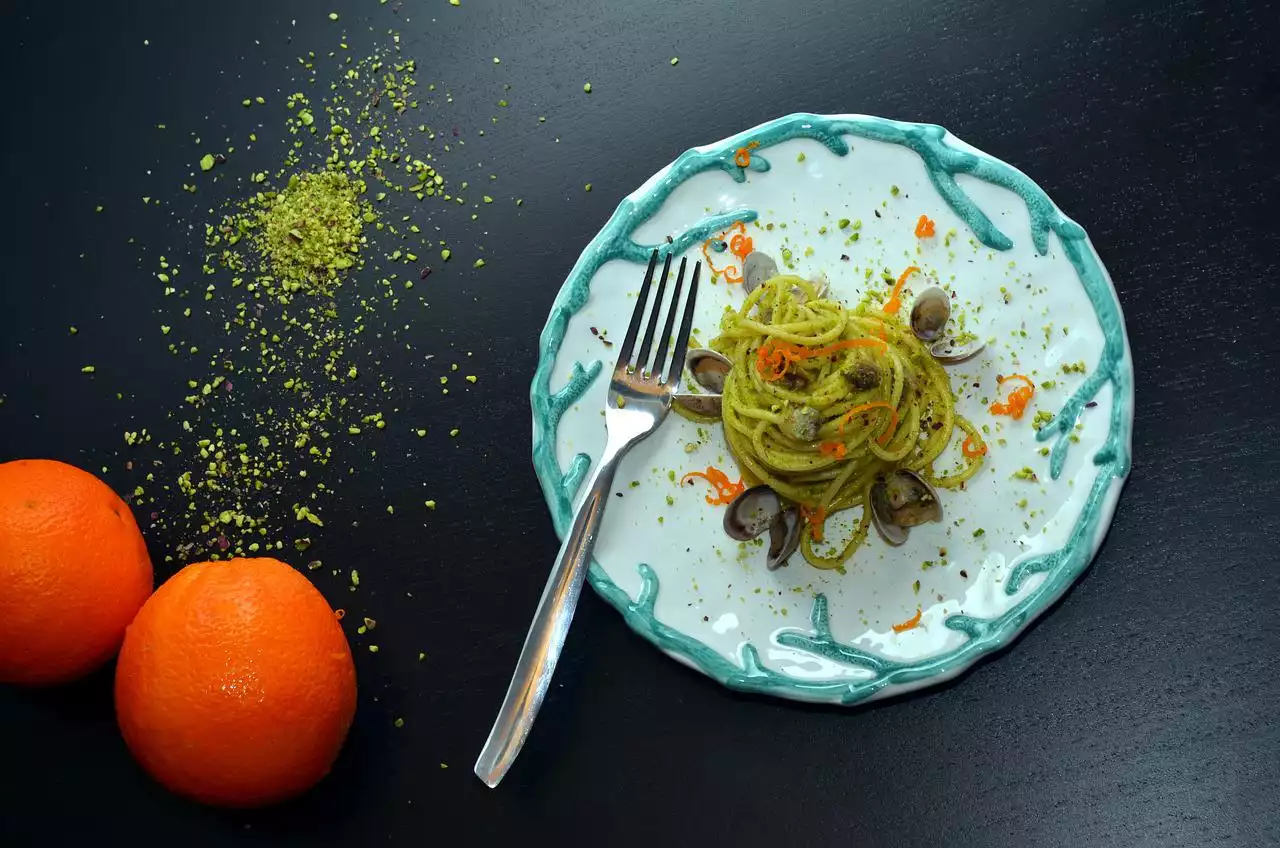Italian cuisine is a reflection of its geographic location, the varied geography of Italy and the many diverse cultures that have influenced it over the centuries. The cuisine is based on local and regional ingredients such as olive oil, tomatoes, mozzarella, pecorino cheese and anchovies. Italian food is traditionally simple, with limited ingredients and often prepared in an open kitchen so that the smell of the food permeates the restaurant and draws diners in. Flavors are often accentuated by an emphasis on freshness and simplicity.
In Italy, the cuisine reflects the country's long history, geographic location, varied cultures and the natural resources available in each region. The country is home to the Mediterranean and the northern European climates, which have both influenced the Italian cuisine. The cuisine is also influenced by neighboring countries such as France, Switzerland and Austria. The varied geography of Italy has also left its culinary imprint. For example, the cuisine of Sicily reflects the influence of the southern European cultures, while the cuisine of Sardinia reflects the influence of the African cultures.
The different cultures and people that have settled in Italy have also left their mark on the Italian cuisine. These include the Romans, Byzantines, Arabs, Normans and Austrians. The various regions of Italy have also influenced the Italian culture and cuisine. These include the north, the central and the southern regions of Italy.
Food From the Sea
Italy is one of the world’s most fertile countries and its fertile soil has long attracted people from other countries. Thus, the Italian cuisine is a blend of the cuisines of its settlers. The Italian coastline is very long and is dotted with picturesque fishing towns. Seafood is an important part of the Italian cuisine and is usually served in one of its most popular sauces, marinara. The Italian coast is also home to a number of islands, including Sardinia, Sicily and Capri. Many Italians have also emigrated to other countries and have brought with them the Italian cuisine, which has been adapted to the local culture. For example, macaroni, which is a staple food of the American diet, is very popular in Italy and is usually served with tomato sauce.
Italy’s specialties
There are many different dishes that can be considered “national specialties” of Italy. One of the most famous and prominent is pizza, which is a thin, baked base of flour and water or tomato sauce topped with various vegetables and cheeses. Pasta, which is a popular staple food in Italy because of its versatility, is also considered a “national specialty.” Pasta can be served in many different ways, and can be served as a main dish or as a side dish. Fettuccine is a particular type of pasta that is usually served in a cream or a butter sauce while spaghetti is usually served in a tomato or a meat sauce.
Basics of Italian Cooking
Italian cuisine is naturally simple, with limited ingredients and often prepared in an open kitchen so that the smell of the food permeates the restaurant and draws diners in. Flavors are often accentuated by an emphasis on freshness and simplicity.
- Vine-ripened tomatoes are an essential ingredient in Italian cooking. Pesticide-free and grown in the open, the tomatoes are a crucial part of the Italian diet.
- Olive oil is another essential ingredient of the Italian cuisine. It is used for frying, for drizzling over pasta and vegetables, and for dipping bread.
- It is a common practice in Italy to serve pasta and other dry dishes before or after the main meal.
Fish and seafood
There are many different types of fish and seafood that are popular in Italian cuisine. Sardines and anchovies are some of the most common types of seafood consumed in Italy. Sardines are usually canned or smoked and are usually consumed as a snack or as part of a meal. Anchovies are usually salted and are usually used as a topping for bread or pasta. Shrimp is also a popular type of seafood in Italy. Other types of fish that are popular in Italy include salmon, tuna and cod.
Conclusion
Italian cuisine is a reflection of its geographic location, the varied geography of Italy and the many diverse cultures that have influenced it over the centuries. The cuisine is based on local and regional ingredients such as olive oil, tomatoes, mozzarella, pecorino cheese and anchovies. Italian food is traditionally simple, with limited ingredients and often prepared in an open kitchen so that the smell of the food permeates the restaurant and draws diners in. Flavors are often accentuated by an emphasis on freshness and simplicity.
There are many different dishes that can be considered “national specialties” of Italy. One of the most famous and prominent is pizza, which is a thin, baked base of flour and water or tomato sauce topped with various vegetables and cheeses. Pasta, which is a popular staple food in Italy because of its versatility, is also considered a “national specialty.” Pasta can be served in many different ways, and can be served as a main dish or as a side dish. Fettuccine is a particular type of pasta that is usually served in a cream or a butter sauce while spaghetti is usually served in a tomato or a meat sauce.


 How The Frog's Legs Changed The Cuisine In France?
How The Frog's Legs Changed The Cuisine In France?
 Looking At the Perfect Baby Sleepwear
Looking At the Perfect Baby Sleepwear Making the Right Choice with Rattles and Teethers
Making the Right Choice with Rattles and Teethers What is Pizza and Where Did it Originate?
What is Pizza and Where Did it Originate? The Varieties of Pastas in an Italian Kitchen
The Varieties of Pastas in an Italian Kitchen Italian Olive Oil and the Italian Olive Farmers
Italian Olive Oil and the Italian Olive Farmers Italian Cuisine and the Best Tomato Sauce
Italian Cuisine and the Best Tomato Sauce Italian Cheese and its uses in Cooking
Italian Cheese and its uses in Cooking